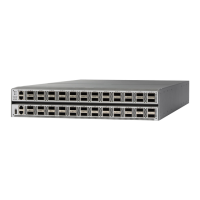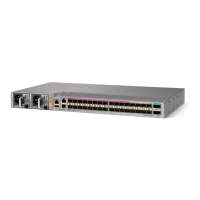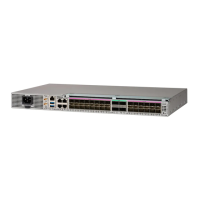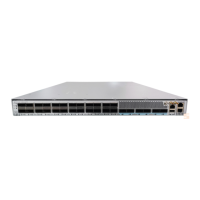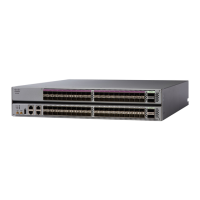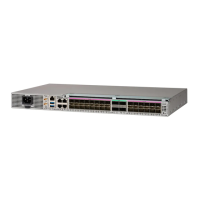match dscp
To identify specific IP differentiated services code point (DSCP) values as match criteria for a class map, use
the match dscp command in class map configuration mode. To remove a DSCP value from a class map,
use the no form of this command.
match [not] dscp {[{ipv4|ipv6}] dscp-value [dscp-value1 ... dscp-value7] |[min-value - max-value]}
no match [not] dscp {[{ipv4| ipv6}] dscp-value [dscp-value1 ... dscp-value7] |[min-value -
max-value]}
Syntax Description
(Optional) Negates the specified match result.not
(Optional) Specifies the IPv4 DSCP value.ipv4
(Optional) Specifies the IPv6 DSCP value.ipv6
IP DSCP value identifier that specifies the exact value or a range of values. Range is 0 - 63. Up
to 64 IP DSCP values can be specified to match packets. Reserved keywords can be specified
instead of numeric values. Table 2: IP DSCP Reserved Keywords, on page 17 describes the
reserved keywords.
dscp-value
Lower limit of DSCP range to match. Value range is 0 - 63.
min-value
Upper limit of DSCP range to match. Value range is 0 - 63.
max-value
Command Default
Matching on IP Version 4 (IPv4) and IPv6 packets is the default.
Command Modes
Class map configuration
Command History
ModificationRelease
This command was introduced.Release 6.0
Usage Guidelines
The match dscp command is supported only in the ingress direction. The minimum value is 0 and maximum
value is 63. The maximum allowed entries: 64.
The match dscp command specifies a DSCP value that is used as the match criteria against which packets
are checked to determine if they belong to the class specified by the class map.
To use the match dscp command, you must first enter the class-map command to specify the name of the
class whose match criteria you want to establish
The match dscp command examines the higher-order six bits in the type of service (ToS) byte of the IP
header. If you specify more than one match dscp command in a class map, the new values are added to the
existing statement.
The IP DSCP value is used as a matching criterion only. The value has no mathematical significance. For
instance, the IP DSCP value 2 is not greater than 1. The value simply indicates that a packet marked with the
IP DSCP value of 2 should be treated differently than a packet marked with an IP DSCP value of 1. The
treatment of these marked packets is defined by the user through the setting of policies in policy map class
configuration mode.
Modular QoS Command Reference for Cisco NCS 5500 Series and Cisco NCS 540 Series Routers
16
QoS Classification Commands
match dscp
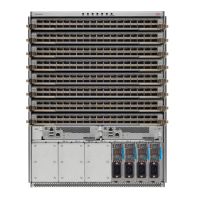
